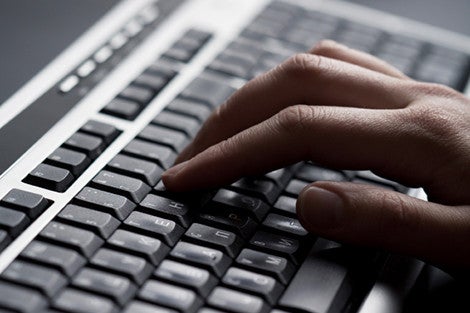July 22, 2014 — Health and wealth are intimately connected. In the United States, people with lower incomes and less education are more likely to smoke, to be overweight, and to be less healthy. One reason for this may be the divide between the ways in which people from different classes access and are exposed to health-related information.
“If you are in a higher socioeconomic position, you are more likely to know about and better understand health risk factors, and to have the capacity to act on this information,” said K. “Vish” Viswanath, professor of health communication at Harvard School of Public Health (HSPH), in a July 15, 2014 “Hot Topics” lecture.
Lower income people have less access to all types of media, Viswanath said, and greater exposure to advertising for unhealthy products such as tobacco and fast food. This information environment can affect their health in a variety of ways, such as influencing their beliefs about healthy behavior and limiting their ability to make informed decisions about medical treatments.
Viswanath identified a potential way to bridge the health information divide: Treat access to the Internet as a right and provide subsidies for those unable to pay. Despite the seeming ubiquity of smartphones, only 70% of low-income people have Internet access, Viswanath said, and even that number may be an overstatement. Poor people who get online are often unable to keep up with the bill and are cut off— losing access to a key tool for participating in modern life.
Earlier this year, Viswanath co-authored a study that analyzed how the poor use the Internet when they are provided with access. The Click to Connect intervention, the first randomized controlled trial to examine this issue, provided participants with free Internet access and training, and tracked their online activities. Many received their first email address through the project, and told Viswanath that the experience was life-changing.
Viswanath bristled at the attitude that he once heard from a reporter, who said that the poor would only use increased Internet access for frivolous purposes. “Of course they use it for entertainment. They are just like the rest of us,” he said. But he found that the more they used the Internet for any purpose, the more likely they were to search for health-related information.
Viswanath and his colleagues also identified barriers that marginalized people—including the elderly, non-native English speakers, and people with disabilities or lower education—face online, such as navigating the complicated structures of some websites.
“If we are serious about addressing health inequalities, we cannot afford to ignore the poor,” Viswanath said, observing that tobacco and junk food companies certainly don’t. “There are opportunities to engage with them if you provide the right context.”
He called for efforts to be made to improve the Internet literacy of low-income people and to pass policies that improve access. “Otherwise, we will continue to perpetuate an inequality in relation to something that is considered a necessity in the 21st century,” Viswanath said. “That is unconscionable to think about.”
Photo: iStockphoto/OlgaMiltsova
